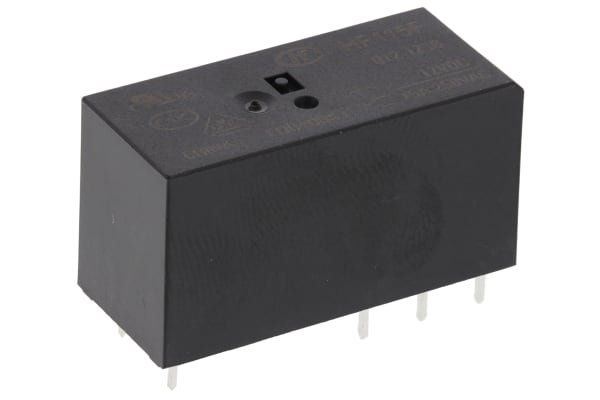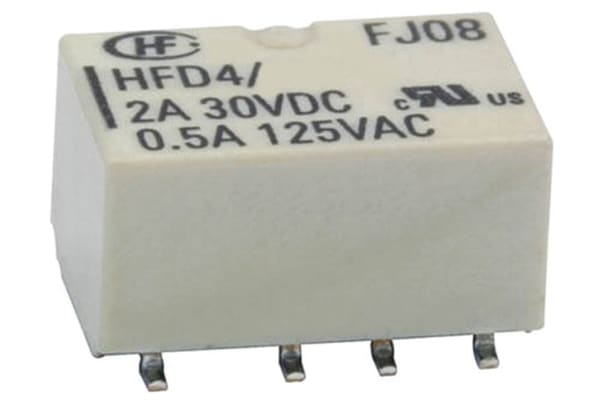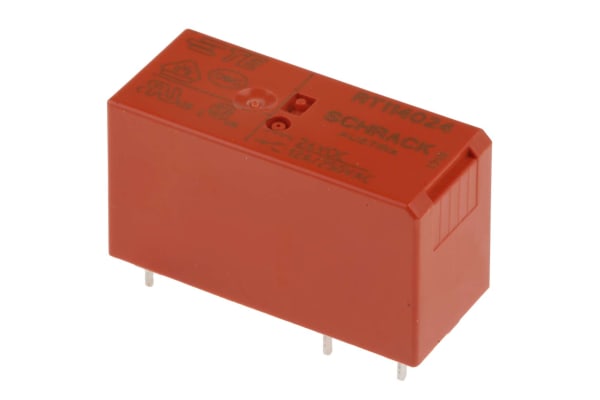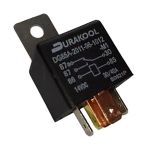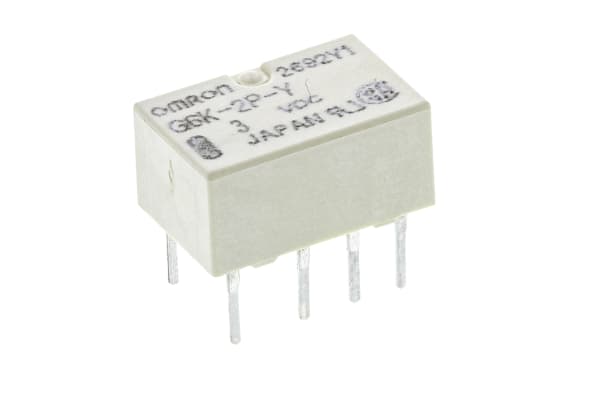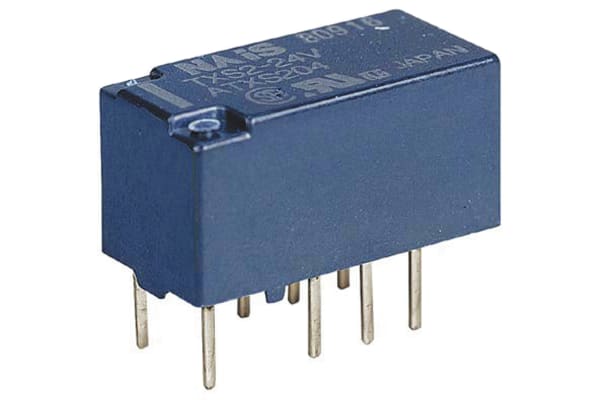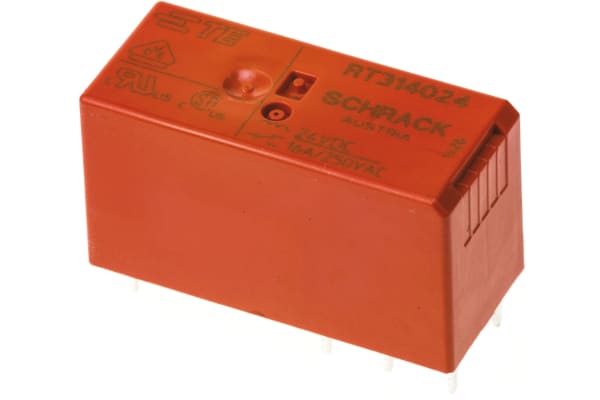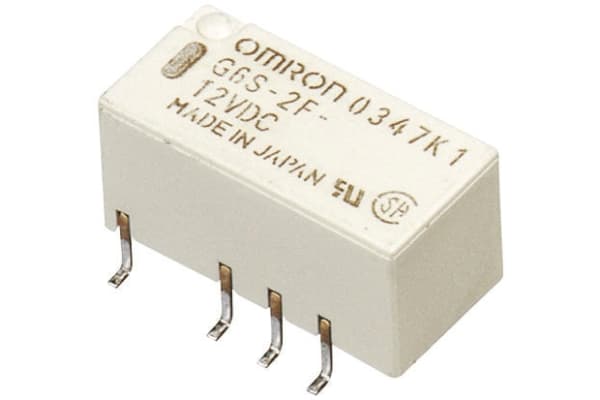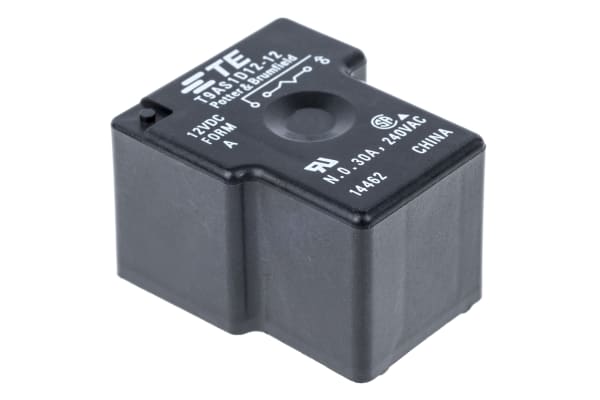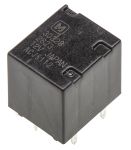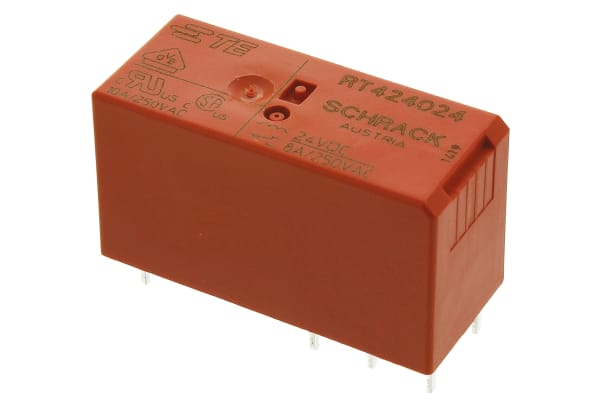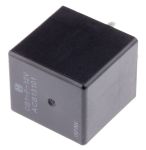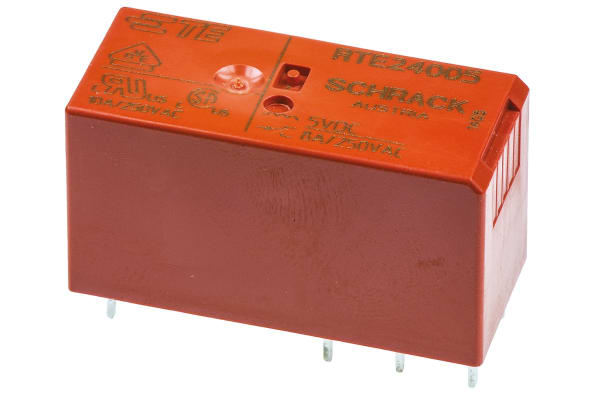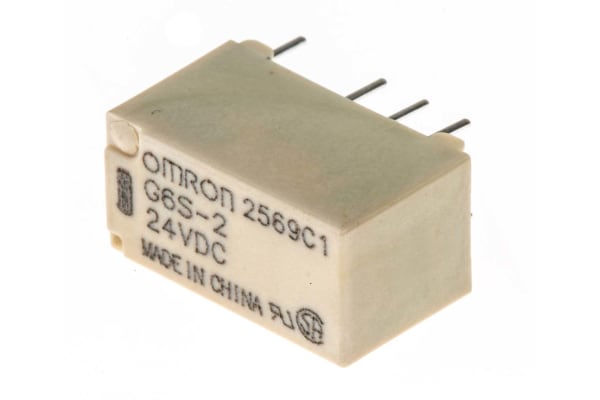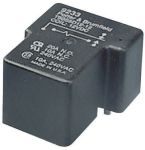Non-Latching Relays
Relays are electrical switches that are operated by electrical impulses with the primary function to open and close a circuit, they can also be referred to as industrial switches. There are 2 main types available, latching and non–latching relays.How do non-latching relays work?Non-latching relays are in a normally closed (NC) position and will stay in this state without power. When power passes through the circuit, the relay switched to a normally open (NO) position by using an internal coil to generate a magnetic force, holding this NO position. Once the current is turned off, it returns to the NC position. This makes non-latching relays well suited to push-button applications like keyboards and micro-controller input buttons.What are non-latching relays used for?Non-latching relays are highly durable and versatile components, making their performance long lasting and suitable for use in a wide range of applications, such as:Automotive enginesHousehold appliancesIndustrial machineryMedical equipmentTelecommunications equipmentWhat is the difference between latching and non-latching relays?Both types of relays in similar in design and function, however, a significant difference between them is that a latching relay will remain in the last position it when it was last powered, whereas a non-latching goes back to its normal position. This makes each more type of relay suitable for different applications. Considerations when selecting a relayWhen choosing a relay, it is important to consider a number of specifications to ensure it is fit for purpose, some factors include:Coil voltage – the required voltage to actuate the switching mechanism. If a voltage is too high this could damage the components, if it is too low then it will not actuate. Contact configuration – This is the state the contacts are in without power. For example SPST, single pole single throw.Contact material – the relay contacts are available in many materials that have certain properties. Common materials are gold, silver, tin oxide and nickel Coil power – the amount of power (watts) the coil operates at. This must match the power in the circuit for correct function. Coil resistance – the amount of resistance (ohms) in the circuit that the coil creates.
-
RS PRO, 12V dc Coil Non-Latching Relay SPDT, 16A Switching Current PCB Mount Single Pole
IDR59,997.08 -
TE Connectivity, 12V dc Coil Non-Latching Relay SPDT, 12A Switching Current PCB Mount Single Pole, RT114012
IDR63,668.23 -
RS PRO, 24V dc Coil Non-Latching Relay DPDT, 2A Switching Current PCB Mount, 2 Pole
IDR60,941.09 -
Omron, 5V dc Coil Non-Latching Relay SPDT, 10A Switching Current PCB Mount Single Pole, G2R-1 5DC
IDR68,702.95 -
TE Connectivity, 24V dc Coil Non-Latching Relay SPDT, 12A Switching Current PCB Mount Single Pole, RT114024
IDR62,934.00 -
Durakool, 24V dc Coil Non-Latching Relay SPDT, 60A Switching Current Plug In Single Pole, DG85F-7011-76-1024-DR
IDR71,849.65 -
TE Connectivity, 24V dc Coil Non-Latching Relay DPNO, 8A Switching Current PCB Mount, 2 Pole, RT444024
IDR71,744.76 -
Omron, 3V dc Coil Non-Latching Relay DPDT, 1A Switching Current PCB Mount, 2 Pole, G6K2PY3DC
IDR57,479.72 -
Omron, 12V dc Coil Non-Latching Relay DPDT, 1A Switching Current PCB Mount, 2 Pole, G6K2F12DC
IDR67,863.83 -
Panasonic, 24V dc Coil Non-Latching Relay DPDT, 1A Switching Current PCB Mount, 2 Pole, TXS2-24V
IDR73,527.89 -
TE Connectivity, 24V dc Coil Non-Latching Relay SPDT, 16A Switching Current PCB Mount Single Pole, RT314024 9-1393239-8
IDR71,115.42 -
Omron, 12V dc Coil Non-Latching Relay DPDT, 5A Switching Current PCB Mount, 2 Pole, G2R-2 12DC
IDR50,032.53 -
Omron, 24V dc Coil Non-Latching Relay DPDT, 2A Switching Current PCB Mount, 2 Pole, G6S-2F 24DC
IDR64,192.68 -
RS PRO, 5V dc Coil Non-Latching Relay DPDT, 2A Switching Current PCB Mount, 2 Pole
IDR63,982.90 -
TE Connectivity, 12V dc Coil Non-Latching Relay SPNO, 30A Switching Current PCB Mount Single Pole, T9AS1D12-12
IDR74,576.79 -
Panasonic, 12V dc Coil Non-Latching Relay DPDT, 1A Switching Current PCB Mount, 2 Pole, TXS2-12V
IDR46,046.71 -
Panasonic, 12V dc Coil Automotive Relay DPDT, 20A Switching Current PCB Mount, 2 Pole, ACJ5112
IDR63,143.78 -
TE Connectivity, 24V dc Coil Non-Latching Relay DPDT, 8A Switching Current PCB Mount, 2 Pole, RT424024 6-1393243-8
IDR88,841.83 -
Panasonic, 12V dc Coil Automotive Relay SPDT, 40A Switching Current PCB Mount Single Pole, CB1-P-12V
IDR82,233.76 -
TE Connectivity, 24V dc Coil Non-Latching Relay DPDT, 3A Switching Current PCB Mount, 2 Pole, V23105A5005A201
IDR67,549.16 -
TE Connectivity, 5V dc Coil Non-Latching Relay DPDT, 8A Switching Current PCB Mount, 2 Pole, RTE24005
IDR56,640.60 -
Omron, 24V dc Coil Non-Latching Relay DPDT, 2A Switching Current PCB Mount, 2 Pole, G6S-2 24DC
IDR64,926.91 -
Omron, 24V dc Coil Non-Latching Relay SPNO, 15A Switching Current PCB Mount Single Pole, G5CA-1A-E DC24
IDR58,423.73 -
TE Connectivity, 48V dc Coil Non-Latching Relay SPNO, 30A Switching Current PCB Mount Single Pole, T9AS1D12-48=T9A
IDR75,940.36



